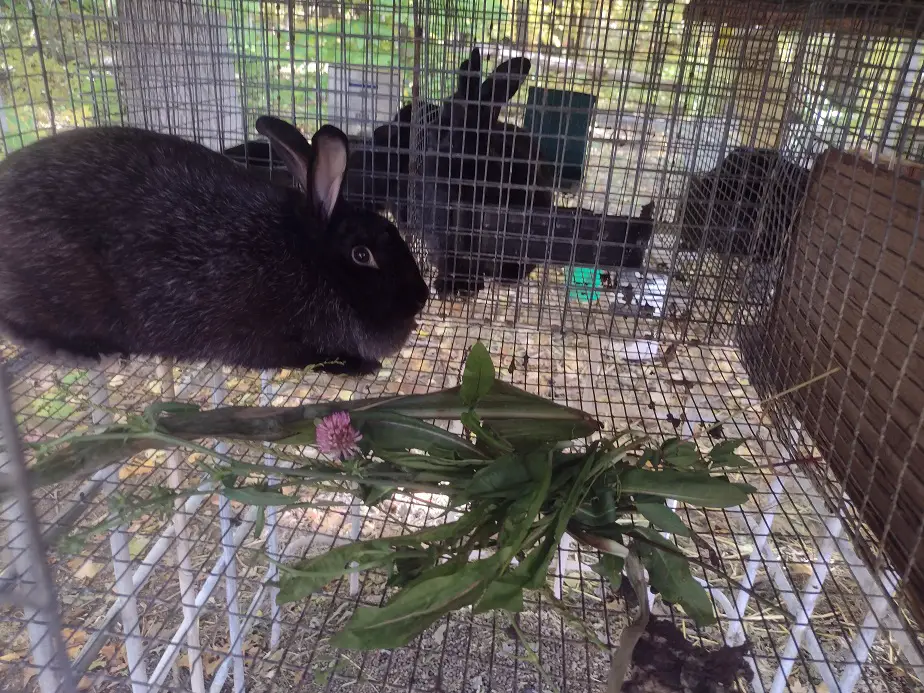I love rabbits. They are one of the most self-sufficient capable meat animals. We feed our rabbits on both wild and garden-grown fodder. It does pretty well.
Alfalfa, mangel beet, corn, sunflower, and wild grasses are all good feeds for rabbits. The key is to provide fiber, carbs, protein, and an assortment of vitamins and minerals. Growing feed for rabbits is easy, and rabbits can thrive on freshly picked plant matter, but they will grow poorly on low-quality diets.
I’ve found a few pretty awesome plants to grow, or let grow, for rabbits. The only concerns are in storing and making sure the feed is adequate.
Feeding Rabbits Fresh Fodder
Rabbits need a high-fiber diet, moderate in protein. It’s a lot like horses and goats. Depending on the4 stage of development, rabbits can benefit from higher protein levels. Immature bunnies and pregnant does usually benefit from a high-protein fodder.
Now, when I say fodder, I’m talking plant-based feedstuffs. Good rabbit feed includes things like leafy greens, grains, and starchy vegetables. Most rabbit feed contains ground alfalfa and ground corn, with added vitamins and minerals. The added vitamins and minerals are important for pelleted feed.
Protein is the largest growth limiting factor. It also greatly impacts the number of bunnies a doe will birth. All the protein rabbits need are available in green plant material. But, many plants are way too low in protein, especially grasses. Most grass is between 11 and 7 percent protein.
The two most recommended plants for rabbits are orchard grass (10 percent protein) and timothy grass (8 percent protein). Rabbits usually need between 14 and 18 percent plant proteins in their diet. Neither of those grasses are at all sufficient for a growing or pregnant rabbit but may do for an older, inactive one.
Grass is also a bit low, compared to other plants, in vitamins and minerals. Especially when dried. Plants lose some protein, as well as vitamin and mineral content when dried for hay. Something to remember when selecting plants for feed.
Grass is very good for rabbits and they do love fresh grass, but it doesn’t fill them up or help them grow very well. I’ve fed young rabbits on just grass and consistently seen growth at about half the expected rate as compared to raising them on a cheap, off-brand pelleted feed with 16 percent protein.
I also saw greatly reduced litter size and have seen issues with does that didn’t feed their bunnies well enough. Comparing the results from fresh grass to that of higher protein fresh greens, I have seen a huge difference. High-protein leafy greens resulted in high litter numbers, bigger bunnies, and healthier does.
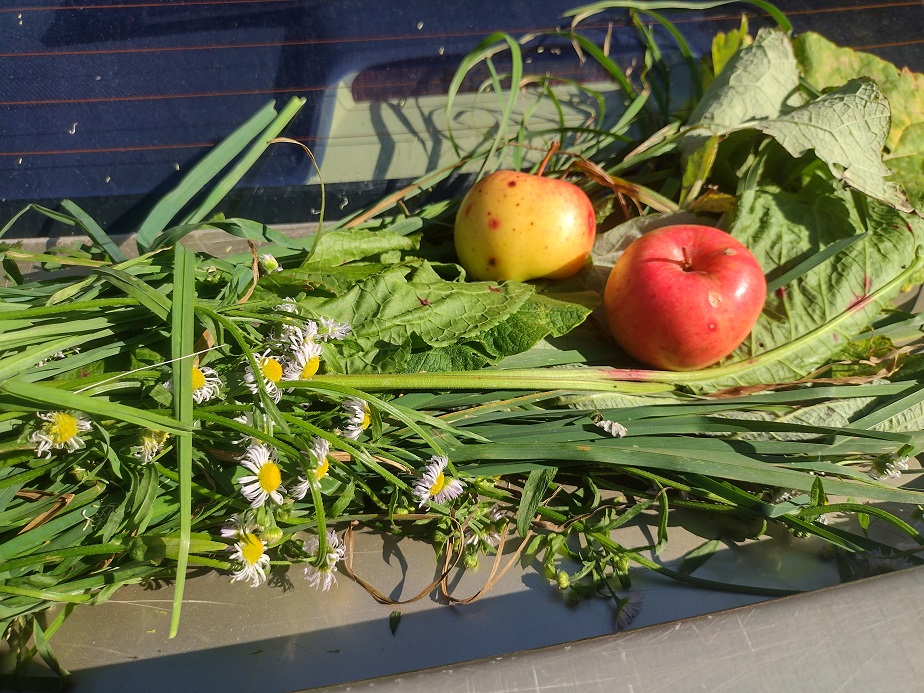
Best Plants for Rabbit Feed
I do give my rabbits some grass, after all, it’s good for them and a varied diet is important. But, I have a few plants that I really like to feed my rabbits. I base it on both the nutritional aspects of the plant and on the real-world results, I’ve seen firsthand.
There are both wild and cultivated plants that I use, have used, or will likely use at some point for rabbit feed. I consider a high-protein fodder (fresh plant material) to be at least 18 percent protein. That way you can pick it and dry it, and still likely have at least 16 percent protein available in the feed.
Best Wild Plants for Rabbit Feed
- Alfalfa
- Clover
- Chickory
- Dandelion
- Dock (burdock and bloody dock for sure)
- Plantain (both broadleaf and longleaf varieties)
- Sunflower leaves
- Comfrey
- Tree leaves (see next list)
Alfalfa is the creme of the crop as far as protein, vitamins, and minerals combined. It’s usually between 16 and 22 percent protein, and it’s high in calcium so it greatly benefits nursing mothers.
Clovers are just a bit lower in protein than alfalfa but have similar overall nutrition. They are lower in calcium and are a bit less productive, but are still fairly good for growing rabbits.
Dandelion and chickory are usually around 20 Percent protein and are super high in vitamins and minerals. These are my personal favorites. Chickory is a higher yielding, but dandelion has higher amounts of vitamins. Both really boost rabbit health, and greatly benefit a pregnant or nursing doe.
Dock grows wild everywhere. Its leaves are high in protein, as well as vitamins and minerals. I have raised up rabbits on only dock leaves and seen fairly decent results. To my knowledge, all types of docks are about the same. Dock grows a large, starchy taproot that can be fed to rabbits too.
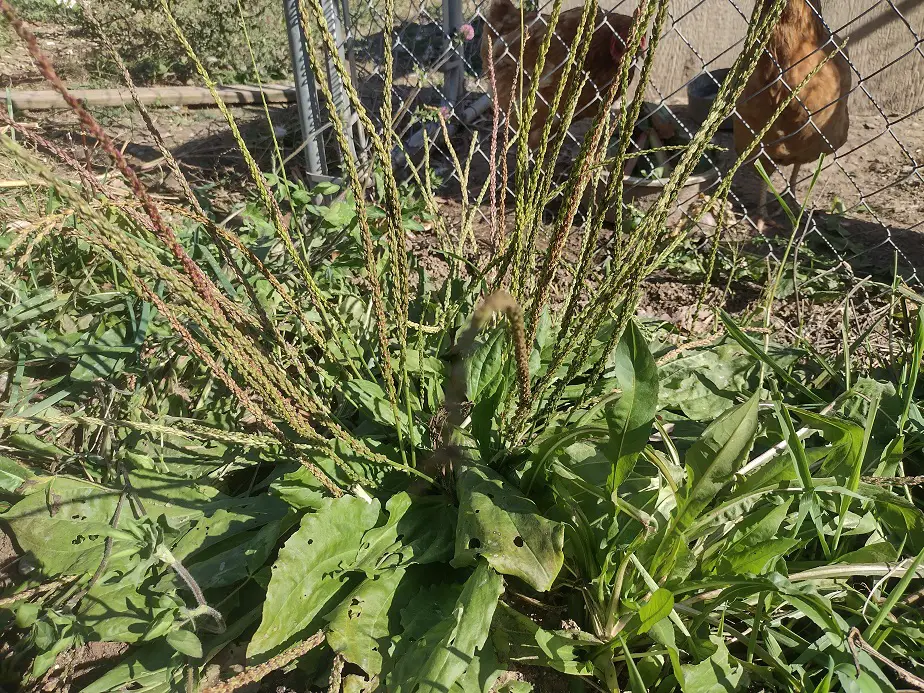
Plantain is high-protein, highly digestible, and very high in beneficial vitamins and minerals. I often let the broadleaf plantain mature and feed the seed stalks to my rabbits. The seeds add starchy energy content to a rabbit’s diet.
Sunflower Leaf is almost a complete feed for rabbits. All varieties of sunflowers produce these nutritious, high-protein leaves. I’ve been stripping leaves from mature sunflowers all summer long. Right now in October, I’m harvesting leaves from late-season sunflowers for the rabbits. They do well on it.
Comfrey is another super plant for rabbits. It’s equal in protein to alfalfa, often higher in vitamins and minerals, but a bit lower in calcium. It’s one of the most productive plants with the most number of harvests per year.
My friend Harold Thornbro over at Redemption Permaculture sells comfrey plants in season. Here’s a link to his wares.
Something to notice here is that everything so far is a taproot plant. Plants with a distinct taproot are usualy higher than average in overall nutrition. I’m talking vitamins and minerals. The long roots extend down deeply through multiple layers of soil to exract a lot of different minerals, which are deposited in the plant’s leaf matter.
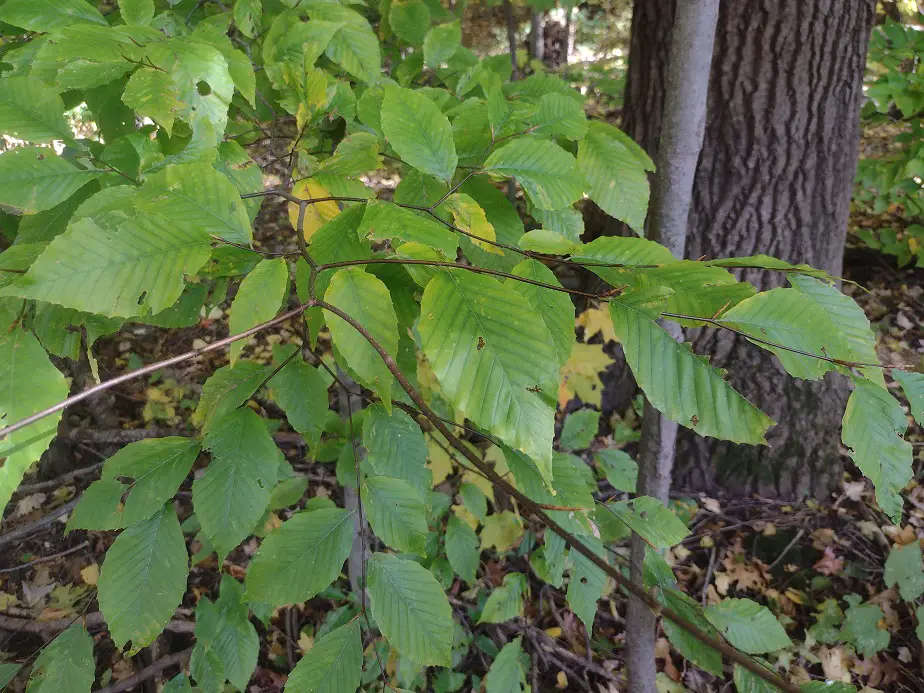
Tree Leaves High in Protein
- Mulberry
- Beech
- Ash
- Alder
- Poplar
- Birch
- Lime
- Hazle
*These tree leaves are high enough in protein to make up the bulk of a rabbit’s diet but should be balanced with plants containing high levels of vitamins and minerals.
Tree leaves are often overlooked for animal fodder, probably because they’re often hard to reach and tough to harvest. But, a lot of trees have super duper feed values and protein content. The ones on this list have an approximate 18 percent protein level.
Protein decreases in drought, and towards the end of the season. That’s the same for all plants. Younger growth has less fiber and more protein than older leaf growth. I feed a good amount of poplar leaf to my rabbits. I just strip the leaves off lower branches. They re-grow fairly quickly and the rabbits love them.
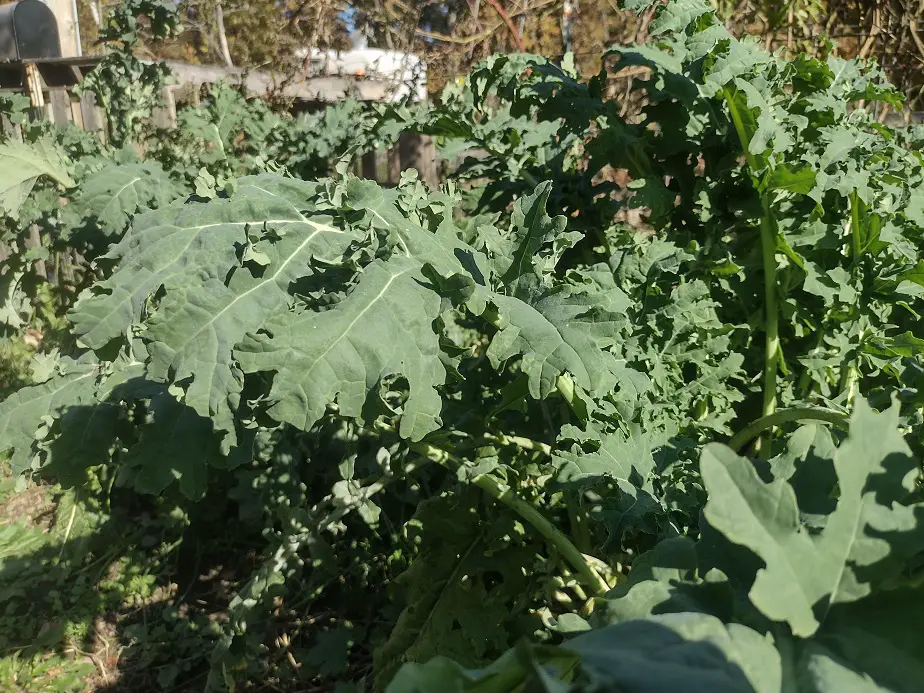
Vegetables to Grow for Rabbit feed
- Beet (sugar, mangel, garden varieties)
- Chard
- Kale
- peas
- beans
- pumpkin/squash
- Head lettuce
Leafy greens are pretty productive in the wild, but starch is harder to get. I like to grow starchy vegetables to add energy to rabbit freed, especially in the winter. My favorites are winter squashes, including pumpkin, and mangel beets. They store well if kept from freezing, and are great to feed whole.
When I first got back into rabbits, I didn’t have money for feed, but I did have squashes. I fed a pair of rabbits on whole spaghetti squash all summer long. When fed whole, squashes have moderate starch levels, moderate protein levels, and decent amounts of fiber. Overall, it’s a good feed additive.
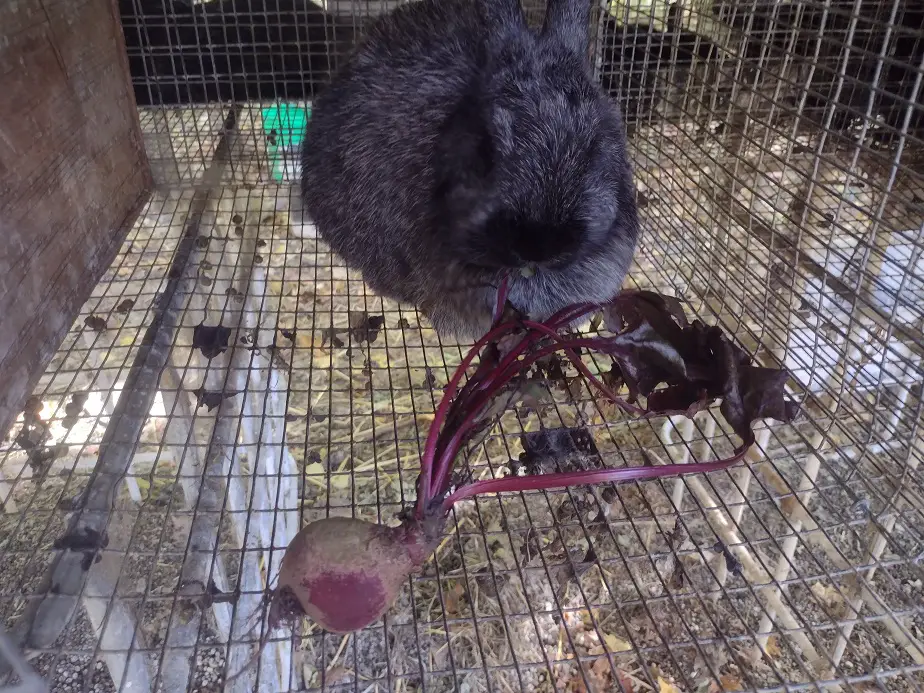
Mangel beet and sugar beet, and regular beets are all decent options for rabbits. They are high starch, for vegetables at least, and have a lot of good fiber. The greens from beets are actually pretty high in protein too. When fed together, it’s a good general feed that helps rabbits gain a bit of weight.
Beans and peas are great for rabbits when feed green, in the pod. They’re also a great way to up the protein in a rabbit’s diet. Green beans and green peas add protein and starch to a leafy diet.
Head lettuce is easy to grow in cool climates and produces a lot of good leafy green. It’s low-protein and pretty much void of starch, but very nutritious. I fed a lot of romaine and butterhead lettuce to my rabbits this spring, mostly because it wasn’t selling well at the farmer’s market.
I’ve tried a lot of different feed options, mostly out of necessity. I didn’t have much money for a long time. What I’ve learned is that most of these work, but I prefer 80 percent of the diet (by dry weight) to consist of either fresh of dried greens. Starchy vegetables can cause rabbits to gain weight quickly.
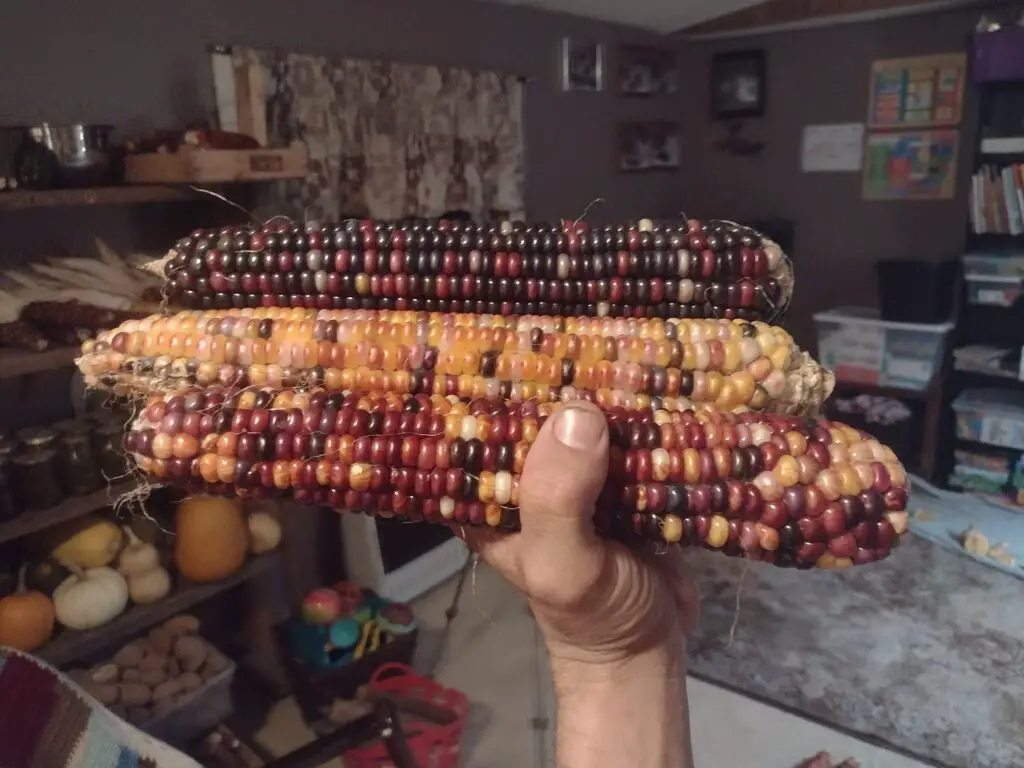
Best Grains for Rabbit Feed
- Corn
- Oats
- Sunflower seed
- Wheat
- Barley
- Rye
- Buckwheat
Most people don’t think of grains as a rabbit feed, but most rabbit feeds use grains to up the energy levels. The three I like most are corn, oats, ad sunflower seed. They also happen to be the most commonly used in the rabbit feed industry.
We grow corn and sunflowers for the animals, and buy oats from a farm down the road. Grains should always be whole-grains, as in, but dehulled and de-germed. The hull adds good fiber which helps digest the grain. Whole oats used to be the primary feed for rabbits until the 1970s when pellets got popular.
Now, most of these aren’t too high in protein. Most grains vary from 12 to 8 percent protein. The exception is sunflower seeds. They can be as high as 45 percent protein and have a very full-spectrum protein. Sunflower seeds can actually replace soy in animal feed, but it’s more expensive.
Corn may be fed to rabbits whole of cracked, but it’s low in fiber, so it’s usually restricted to about 10 percent of the animal’s diet. I feed whole corn to my rabbits. They seem to digest it better, I think because it takes more chewing.
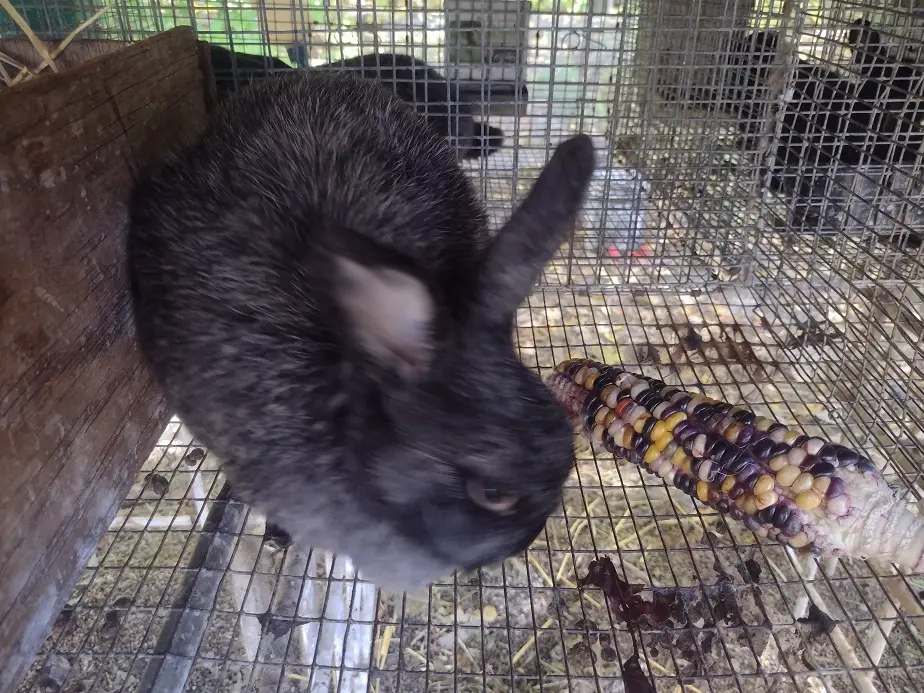
There’s a big scare in the rabbit world about feeding them anything containing corn. Even though corn is in most feeds, there are a lot of rabbit owners who think that corn can kill rabbits and avoid it at all costs. This all started back in the 80s when a feed company put out a bad batch of corn.
First, it caught the attention of horse owners, then rabbit owners. It had high levels of a green mold that produced toxic spores. It hurt a few animals and hasn’t happened since. Corn is highly digestible to rabbits and is by far the most productive grain to grow.
At one point the US Department of Agriculture published a report titled “Rabbits Show Good Gains on Corn”. The study concluded that course-ground corn was a functional feed for weaned meat rabbits. The pellets we buy now and then contain corn. I feed my rabbits dry corn on the cob and shelled corn.
Whole grains, like corn, oats, and sunflower seed help skinny rabbits to put on weight quickly. We feed grains in the winter months, and after a doe has finished nursing a litter of bunnies. The extra calories help her to get her weight back. Nursing 6 -10 babies can take a lot out of a mom.
Grains should be limited to keep animals from getting fat and from experiencing digestive difficulties. I will include grains at up to 20 percent (by dry weight) of the total feed offered. But, less is better in most situations. In winter and if low-energy hay is all that’s left, I’ll go up to 20 percent.
When I do offer grain, I usually don’t give much more than a teaspoon per feeding, which is twice a day. Larger rabbits may get a tablespoon. But, I do keep an eye on their condition to make sure they aren’t getting fat. That can happen fast on a grain-heavy diet. Introduce grains over a 2-3 day period to help digestion.
So, to round that all up:
- Greens, either fresh or dry, should make up the majority of a rabbit’s diet.
- High-protein plant matter should make up at least 50 percent of the total diet.
- Starchy vegetables can help rabbits gain weight, and can be up to 20 percent of a rabbit’s diet.
- Grains should usually be limited to about a teaspoon a day, or no more than 20 percent of the total feed when quick weight gain is needed.
- As much as possible, a balanced diet is key. Feeding just one or two things tends to cause nutritional deficiencies that lead to poor weight gain, smaller litter sizes, and/or increased mortality rate of bunnies.
Related Articles:

